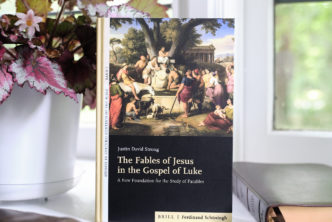Book Review
Arthur J. Dewey, Roy W. Hoover, Lane C. McGaughy, and Daryl D. Schmidt, Polebridge Press, 2010, 270 pp.
Those who appreciated the fresh and edgy translation of the Scholars Version of the Gospels will be thrilled with the Westar Institute’s latest published translation, The Authentic Letters of Paul: A New Reading of Paul’s Rhetoric and Meaning. Four of the translators of the SV Gospels collaborated to produce this latest work: Arthur J. Dewey, Roy W. Hoover (co-author of The Five Gospels), Lane C. McGaughy, and the late Daryl D. Schmidt, one of the general editors of the Scholars Version for The Complete Gospels and coordinator for the present translation. Their work on Paul is easily as bold and innovative as the earlier work on the Gospels.
Though not as attractively presented as The Complete Gospels, The Authentic Letters of Paul is nevertheless well designed and ideally suited for a more broad public audience — though scholars will enjoy it as well. The accessibility of the volume is a key asset, providing interested readers with the necessary tools to reimagine better how Paul’s words may have been received in their original context. The translators have worked hard to distance “the authentic Paul” from subsequent layers of tradition, from canonical layers (including the deutero-Paulines, the Pastoral Epistles, and Acts) to the later church councils and even the Reformation. In doing so they present the widely agreed-upon genuine Pauline texts in chronological order and even reorganize the texts of 2 Corinthians and Philippians to demonstrate how they might have been read as collections of letters prior to their consolidation in their current form. Texts suspected of being later, non-Pauline interpolations are removed from their canonical context and included as appendices to the letters, better illustrating how Paul’s letters would originally have looked assuming the conclusions of many biblical scholars. Informative introductory essays, cameo essays, annotations, and a helpful glossary explaining key terms nicely round out the volume, making it a worthy sequel to the SV Gospels.
Many conventions of the SV Gospels have been retained. For instance, the translators have continued to use the more literal and descriptive “Anointed” instead of “Christ.” However, there are some noteworthy changes. For example, what was “God’s imperial rule” in the SV Gospels has become more eloquently “the Empire of God” in SV Paul. The SV Paul translators have also abandoned the SV Gospels’ substitution of “Judean” for “Jew.” The SV Gospels had originally intended the substitution as a corrective to anti-semitism, but critics of that type of substitution (like A.-J. Levine) have argued that it de-Judaizes the New Testament and inadvertently fuels anti-semitism anyway. The move to “Jew” and “Jewish” will doubtless be welcome among many.
Another notable shift is the move away from the term “Father” for God. Occasionally “Father” has simply been left untranslated (as in Rom. 6:4; Gal. 1:4), but it is otherwise rendered as “benefactor” (Rom. 15:6), “Benefactor” (2 Cor. 1:3; 11:31), “great benefactor” (Phil. 1:2; 2:11), “Great Benefactor” (Rom. 1:7; Gal. 1:3; Phil. 4:20), “creator and benefactor” (Philem. 3), and “Creator and Benefactor” (1 Cor. 1:3; 8:6; 15:24; 2 Cor. 1:2; Gal. 1:1; 1 Thess. 1:1,3; 3:11,13). The word “Father” is still used with “Abba” in Romans 8:15 and Galatians 4:6, however, and is also retained in 2 Corinthians 6:18, which is part of a passage that has been set aside as a non-Pauline interpolation. By using terms like “Benefactor” instead of “Father” in the majority of cases, the SV Paul translators have managed to accomplish two things simultaneously. These terms not only provide non-gender-specific references for contemporary readers, they accurately reflect the concept of the paterfamilias in Greco-Roman culture as well. “Benefactor,” then, is both accurate to the intent of the original and effective as a contemporary term.
As in the Synoptics of the SV Gospels, the SV Paul translators continue to render pistis as “trust” rather than “faith,” but with some additional rhetorical flourishes intended to draw out the fuller significance of Paul’s usage, like “confidence in and total reliance upon God” (Rom. 4:5) and “complete confidence and unconditional trust in God” (Rom. 10:8). Whereas in general the shift in emphasis is laudable, nevertheless these lengthy phrases seem slightly awkward as translations of a single Greek term.
In a cameo essay on Galatians 2:16, the SV translators also describe what has become the consensus understanding of the genitive in pistis christou as subjective rather than objective (contra nearly every Bible version since 1881). However, they shift from a christological focus of pistis back to an anthropological focus by rendering phrases like “the faith of Jesus” and “the faith of Christ” (Gal. 2:16) with translations like “a confidence in God like that of Jesus” and “a confidence like that of God’s Anointed” (emphasis mine). In other words, instead of emphasizing the efficacy of Jesus’ faithfulness in the divine act of justification, the translators still emphasize the efficacy of the individual’s faith (trust). What distinguishes their interpretation from the objective genitive interpretation is that the individual’s trust is not directed toward Christ but toward God in the same way that Christ trusted God.
The SV Paul translators distance Paul from the Reformation’s later interpretation in other concrete ways, most notably in their articulation of the new perspective on Paul. A cameo essay (pp. 149,150) explains Paul’s Damascus Road experience in terms of a prophetic calling as opposed to a religious conversion, and the term “the works of the law” is rendered as “traditional religious practices,” reflecting the portrayal of “works” as sociological “boundary markers” like circumcision, food laws, and holy days.
The translators have also labored hard to illustrate the distance between Paul and Nicene orthodoxy. In the case of the Holy Spirit, this has resulted in a wide variety of alternative phrases intended to convey the idea of God’s Spirit as a power or principle as opposed to a “person” in the Nicene sense. Occasionally “Spirit” is left untranslated (as in 1 Cor. 2:12; Gal. 3:5) or rendered something like “spirit of goodness” (1 Thess. 4:8), “God-empowered life” (Gal. 6:8), or even “charismatic fervor” (1 Thess. 5:19), but many other phrases have loosely been used to translate “Spirit” or “Holy Spirit,” including “God’s presence and power” (Rom. 5:5; 8:5; 14:7; 1 Cor. 2:4,10,13; 3:16; 2 Cor. 3:17,18; 5:5; Gal. 3:2,3,14), “God’s power and presence” (Rom. 8:16,27; Gal. 5:17,18), “presence and power of God” (Rom. 15:13,30; 1 Cor. 6:11,19; Phil. 1:19), “power and presence of God” (Rom. 8:11; 9:1; 2 Cor. 1:22; 1 Thess. 1:5,6), “God’s power and purpose” (Rom. 8:6,9), “power and purpose of God” (Rom. 8:14), “God’s purity and power” (Rom. 15:16), “God’s power” (Rom. 8:23,26; 1 Cor. 12:7,8; Gal. 4:29; 5:22,25), “power of God” (Rom. 8:13; 1 Cor. 12:4,11,13; 2 Cor. 3:3; Gal. 5:5), “the authentic power of God” (1 Cor. 12:3), “the presence of God’s power” (Rom. 15:19; Gal. 5:16), “God’s powerful presence” (2 Cor. 13:13), “divine power” (1 Cor. 12:8,9,13), and even “the wisdom of God” (1 Cor. 7:40) and “the hidden wisdom of God” (1 Cor. 2:14; 6:16).
With respect to christology, the SV Paul translators have also endeavored to illustrate the distance between Paul and Nicea in a variety of ways. The Philippians hymn (Phil. 2:6ff) is interpreted in terms of “Adam Christology” (i.e., comparing Jesus to Adam), not in terms of divine preexistence. Although not necessarily reflecting the consensus view on the Philippians hymn, the SV Paul translators have provided a thoughtful cameo essay arguing their case (which interestingly doesn’t reference the work of James D.G. Dunn). Romans 9:5b is translated as an independent doxology to God rather than an ascription of deity to Jesus, and 2 Corinthians 8:9 is flagged as a possible non-Pauline interpolation. SV Paul doesn’t capitalize the word “lord,” and “son of God” is included in quotation marks to set it off as “a title of honor given upon the enthronement of Jesus in the heavens” (p. 30). Their overall depiction of Paul’s christology is therefore consistently adoptionist instead of incarnational.
A project as ambitious as this one deserves close scrutiny and consideration. New questions and intriguing suggestions emerge from nearly every page. Nevertheless, the translation has some distracting inconsistencies. The translators are not consistent, for example, in using inclusive language over generic masculine language. More often than not, the translation favors the generic masculine (as in Rom. 4:8; 8:24; 10:16; 12:20; 1 Cor. 8:2,11; 10:12,28b,29,34) but sometimes uses inclusive language instead (as in Rom. 14:10; 1 Cor. 8:12,13; 11:28a,29). In Romans 14:10 the word adelphon is first rendered as “brother” and then as “sister”: “Why do you criticize your brother (adelphon)? Or why do you look down on your sister (adelphon)?” By contrast, the NRSV renders it, “Why do you pass judgment on your brother or sister? Or you, why do you despise your brother or sister?” SV Paul arguably accomplishes the same gender balance in this verse with more elegance. By contrast, it’s distracting to see adelphos rendered as “brother” in 1 Corinthians 8:11 and then as “brothers and sisters” immediately thereafter in vv. 12 and 13. A choice to do one or the other may have been preferable.
This ambiguity interestingly extends to language about God. Whereas the vast majority of Bible translations favor masculine pronouns for God, SV Paul usually avoids gendered pronouns for God altogether (as in Rom. 4:21; 9:18,19,23-25; 11:2,21,22,32,33-36; 1 Cor. 8:3; 1 Thess. 1:10), but inconsistently lapses into masculine pronouns for God on occasion (as in 1 Cor. 2:9,16; Gal. 1:15; 1 Thess. 2:12). It’s particularly distracting when the divine pronoun is conspicuously avoided in 1 Thessalonians 1:10 and then used just across the page in 2:12. Again, it would seem preferable to choose one convention or the other rather than to switch back and forth.
The documentation of sources is also inconsistent. Several essays are amply annotated whereas others aren’t annotated at all. The lack is particularly glaring in the otherwise helpful introductory essay to 2 Corinthians, where the translators articulate the partition theory of Günther Bornkamm, but the reader wouldn’t know that or even what other partition theories are on offer since the only academic references in the essay are vague appeals to “many scholars.” This is not to say that their partition theory is wrong or even implausible, only that it would seem prudent to mention other theories.
It also seems awkward to read on several occasions that the Acts of the Apostles does not provide any reliable biographical information about the life of Paul (pp. 2,3,9-13,71,72), and then to read that “After a stay [in Corinth] of about eighteen months, Paul went to Ephesus where he stayed for about three years” (p. 73) – data found only in the book of Acts.
Despite these oversights and inconsistencies, however, the reader is guaranteed to be enlightened and challenged. The Authentic Letters of Paul is an easy and pleasant read as well as an educational one. Even readers who don’t accept all of the provocative conclusions of the SV Paul translators will find themselves much better informed about what critical biblical scholarship has often concluded about Paul – and why. Consequently, this stimulating volume should be considered a must-read.
Mark M. Mattison




It sounds as though this book will compliment the SV Gospels.
[…] Speakers: Arthur J. Dewey and Lane C. McGaughy, authors of The Authentic Letters of Paul […]